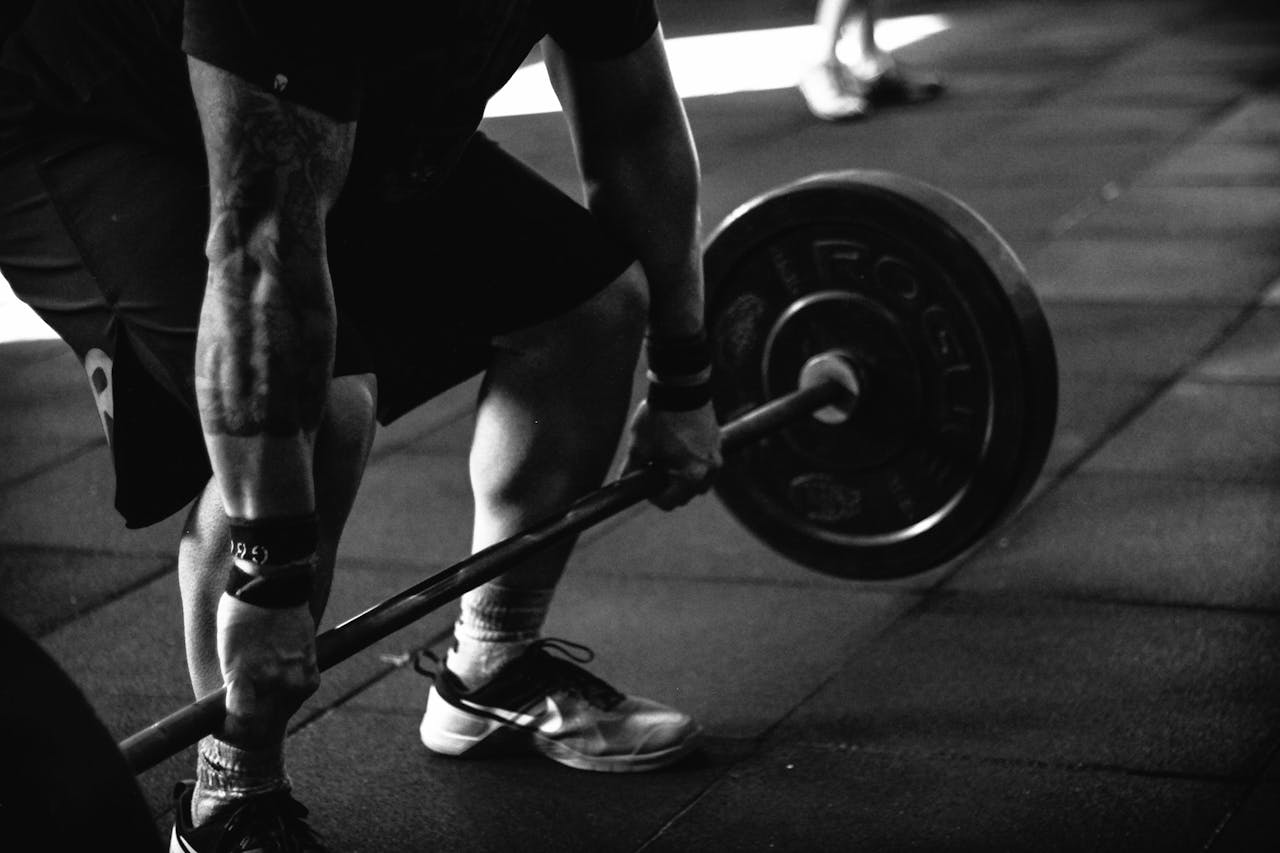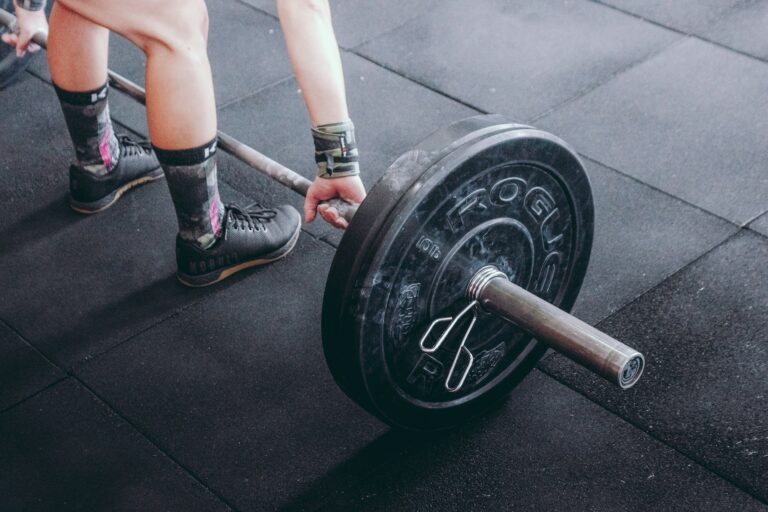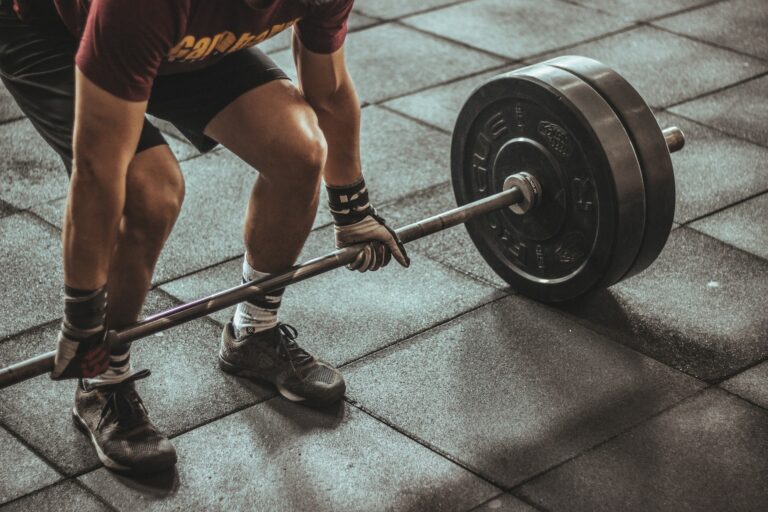Should You Train To Muscle Failure Every Set? What You Need To Know

- Should You Train To Muscle Failure Every Set? What You Need To Know - March 4, 2025
- Nutrition in a Hurry: Top Post-Workout Snacks for Active People - February 20, 2025
- 15 Healthy Meal Prep Recipes: Your Weight Loss Made Easy - February 18, 2025
Training to muscle failure can enhance muscle growth through maximal motor unit recruitment and increased protein synthesis, but you’ll need to manage the risks strategically. Push to technical failure 1-2 times per exercise, focusing on final sets of compound movements twice weekly. Stop when proper form breaks down or you experience excessive neural fatigue. Allow 48-72 hours between failure training sessions for ideal recovery. Understanding the different types of muscle failure will help you optimize your training approach.
Key Takeaways
- Train to failure on final sets only to maximize intensity while preventing excessive fatigue and maintaining proper form.
- Stop when technical form breaks down to prevent injury, regardless of intended rep count or failure target.
- Push harder during compound exercises early in workouts when energy and neural drive are optimal.
- Limit failure training to 1-2 exercises per muscle group and allow 48-72 hours of recovery between sessions.
- Monitor performance decline and recovery capacity; reduce intensity if strength drops more than 20% between sets.
Understanding Muscle Failure: The Science Behind the Burn
When you push your muscles to their absolute limit during resistance training, you experience muscle failure—the point at which your neuromuscular system can no longer produce sufficient force to overcome a specific load. This physiological state occurs when your muscle fibers have depleted their immediate energy stores and accumulated metabolic byproducts.
Understanding muscle physiology is essential: failure happens at both mechanical and neural levels. Your fast-twitch muscle fibers fatigue first, followed by slow-twitch fibers. Performance metrics indicate that approaching failure triggers maximum motor unit recruitment and protein synthesis signaling. You’ll experience a cascade of metabolic stress, including increased lactic acid production and decreased pH levels. This combination of factors leads to temporary muscle fiber recruitment impairment, but it’s precisely this stress that stimulates adaptive responses for strength and hypertrophy gains. Additionally, adequate protein intake post-exercise is crucial for supporting muscle recovery and growth.
Benefits and Risks of Training to Failure
Training to muscle failure offers a powerful stimulus for muscular adaptations, yet it presents a complex risk-reward equation that requires careful consideration. You’ll find that a benefits overview reveals increased muscle fiber recruitment, enhanced metabolic stress, and elevated anabolic hormone response. However, a thorough risk assessment is vital for long-term training success.
- Benefits include maximal motor unit recruitment, increased protein synthesis, and improved mental toughness.
- Primary risks encompass extended recovery needs, higher injury potential, and compromised technique.
- Neural fatigue accumulation can impair subsequent training sessions and overall performance.
When implementing failure training, you’ll need to balance the intensive stimulus against recovery capacity. It’s important to recognize that while training to failure can accelerate gains, strategic application within your program proves more effective than constant implementation. Additionally, understanding the role of muscle mass decline can inform your approach to recovery and training frequency, helping you avoid overtraining.
Types of Muscle Failure and Their Impact

While muscle failure appears straightforward, it encompasses several distinct types that affect your training outcomes differently. You’ll encounter mechanical failure when you physically can’t complete another rep despite neural drive, while metabolic failure occurs when energy systems become depleted. Technical failure manifests when you can’t maintain proper form, which precedes complete muscular failure.
Understanding these variations helps you optimize your performance metrics and training adaptations. Mechanical failure typically occurs during heavy compound movements, whereas metabolic failure is more common in high-volume, moderate-load exercises. When you experience technical failure, you’re approaching muscle fatigue that could compromise safety and effectiveness. By identifying which type of failure you’re targeting, you can better structure your sets, rest periods, and exercise selection for specific training goals. Additionally, incorporating progressive overload into your training regimen can enhance muscle adaptation and growth, maximizing the benefits of each type of muscle failure.
Strategic Implementation in Your Workout Routine
Successful implementation of muscle failure training requires a methodical approach based on your experience level and specific fitness objectives. You’ll need to determine your failure training frequency, establish recovery protocols, and incorporate progressive overload systematically.
- Start with compound exercises twice weekly, training to technical failure while maintaining 48-72 hours between sessions for adequate recovery.
- Implement workout variation by alternating between mechanical and metabolic failure methods every 4-6 weeks.
- Monitor your performance metrics and adjust intensity based on recovery capacity, gradually increasing volume when adaptation plateaus.
For best results, you’ll want to limit failure sets to 1-2 per exercise, focusing on your final sets. This strategy helps prevent excessive neural fatigue while maximizing hypertrophic adaptations through controlled mechanical tension and metabolic stress. Additionally, incorporating strength training into your routine can enhance overall movement efficiency and functionality.
Recovery Protocols for Failure Training

Because muscle failure training places significant demands on both your neuromuscular and metabolic systems, implementing structured recovery protocols becomes essential for ideal adaptation and performance. You’ll need to strategically employ multiple recovery techniques while monitoring your body’s response to the training stimulus.
| Recovery Phase | Rest Period | Primary Focus |
|---|---|---|
| Immediate | 24-48 hours | Muscle repair |
| Short-term | 48-72 hours | Neural recovery |
| Long-term | 72-96 hours | System reset |
To optimize your recovery, you’ll want to prioritize sleep quality, maintain proper nutrition timing, and utilize active recovery methods between training sessions. Consider implementing contrast therapy, compression garments, and targeted mobility work during your rest periods. These evidence-based strategies help accelerate the recovery process while reducing the risk of overtraining syndrome. Additionally, incorporating adequate rest and recovery is crucial for muscle repair and preventing excessive soreness.
Signs Your Body Isn’t Ready for Failure Training

Recognizing your body’s readiness for muscle failure training requires careful attention to specific physiological and performance indicators. When your body signals aren’t ideal, proceeding with failure training can lead to diminished results or potential injury.
- Your resting heart rate is elevated by 5+ beats per minute above your baseline, indicating incomplete recovery and accumulated systemic fatigue
- You’re experiencing persistent joint discomfort or muscle soreness that alters your normal movement patterns during warm-up sets
- Your performance metrics show a decline in force production or speed, with working sets requiring considerably more effort than usual
These fatigue indicators warrant postponing failure training until your body achieves proper recovery. Monitor your sleep quality, hydration status, and overall energy levels to determine when you’re ready to resume high-intensity training protocols.
Frequently Asked Questions
Can I Train to Failure With Bodyweight Exercises at Home?
You can effectively train to failure with bodyweight exercises at home. With proper form and progressive overload, you’ll achieve comparable benefits to gym workouts through push-ups, pull-ups, and bodyweight squats.
Does Training to Failure Affect Testosterone and Growth Hormone Levels?
Training to failure triggers an acute testosterone response and elevated growth hormone release. You’ll see peak hormone levels when you maintain high intensity and volume while approaching muscular failure.
Should Beginners Incorporate Muscle Failure Training in Their Workouts?
While studies show 85% of beginners risk poor form during failure sets, you’ll benefit more from mastering proper technique and building base strength before incorporating failure training into your workout routine.
How Does Failure Training Impact Endurance Athletes’ Performance?
You’ll see mixed endurance adaptations when training to failure: while it can push your performance limits, excessive use can impair your aerobic capacity and recovery between training sessions.
Can Muscle Failure Training Help Break Through Weight Loss Plateaus?
You can overcome plateau breaking by incorporating training to failure, which increases metabolic stress and hormonal responses, potentially accelerating fat loss through enhanced caloric expenditure and muscle protein synthesis.
Final Thoughts
Training to muscle failure can be your greatest catalyst for growth or your fastest path to injury. You’ll need to balance the intense muscular adaptations that failure training provides against the heightened risk of overtraining syndrome and decreased recovery capacity. By implementing strategic failure sets, monitoring your body’s response, and maintaining strict form, you’re positioning yourself for peak hypertrophy while safeguarding against potential setbacks.
Table of Contents







